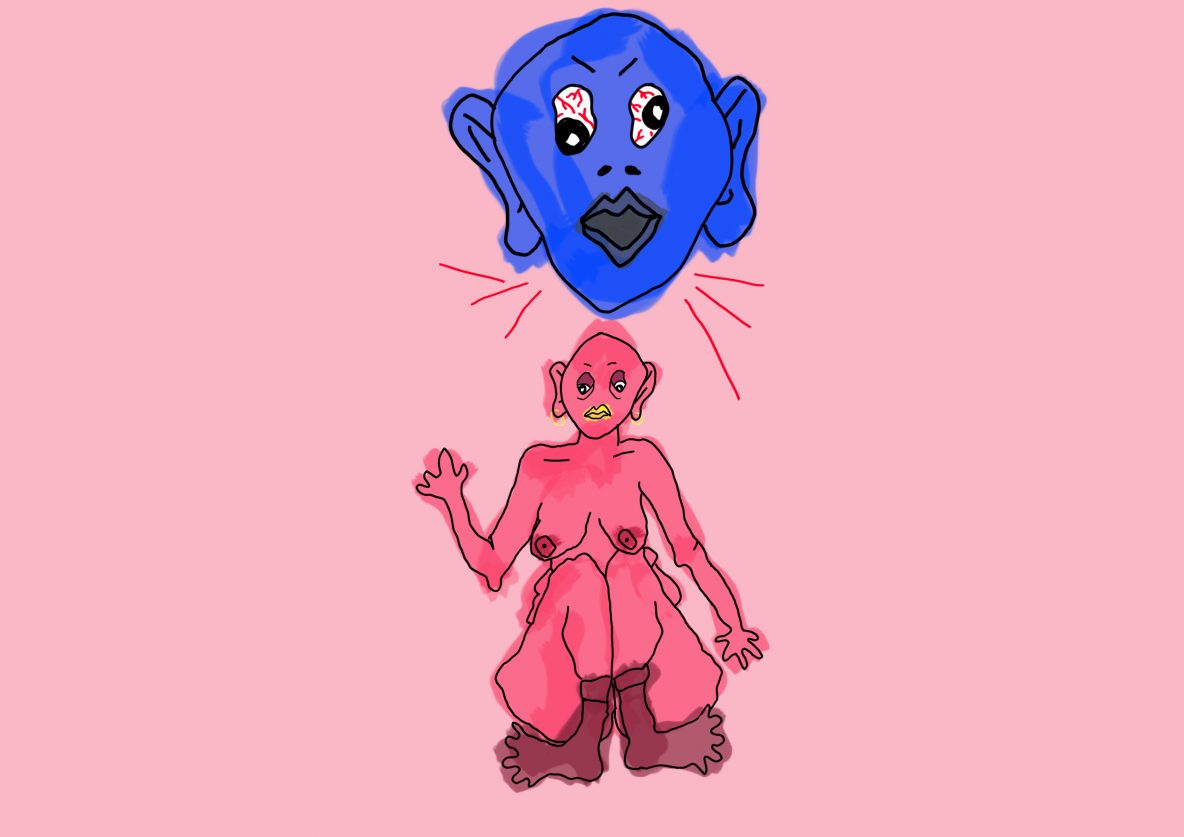WHAT IS GASLIGHTING?
How can we spot it and how do we stop it?
By Chloe French

Illustration by Freya Sprong
‘Some people try to be tall by cutting off the heads of others.’
Emotional abuse isn’t exactly something you google the symptoms of.
We are all guilty of feeling a bit rotten and running straight to the internet to look up our symptoms, convincing ourselves we have only a few days left to live, but when you're experiencing emotional abuse, it isn't quite the same. It's one thing being in tune with your physical wellbeing but an awareness of your loved one manipulating your mental health is rather more complicated.
What’s more, although we may be the first to notice if a friend’s partner is treating them with little-to-no emotional responsibility, looking inward and recognising the damaging behaviour within your own relationship is something which requires an emotional distance from the situation you may not have. It’s a haunting thought that the person closest to you may actually be manipulating your emotions and even more scarily, abusing them. In fact, they are probably the last person you would label as a catalyst, if you found yourself struggling.
This being said, if you were to suspect the way your emotions were being treated in your relationship, where would you turn? Or, what should we be on the lookout for to be better informed of what emotional abuse looks like, and where do we draw the line between passive aggressive behaviour and outright emotional abuse? You may not have heard of gaslighting. But, you will have witnessed it. Whether this be onto yourself, in friends, or in the media.
According to Psychology Today: ‘Gaslighting is a form of persistent manipulation and brainwashing that causes the victim to doubt her or himself, and ultimately lose her or his own sense of perception, identity and self-worth.’ The term comes from the 1944 film Gaslight, in which a husband tries to convince his wife she is insane by causing her to question herself, her sanity and her perception of reality.
Unfortunately, the normalisation of this kind of emotional abuse is all too widespread in the mainstream media, but people are starting to wake up. Gaslighting came to the forefront of media concerns in last year’s Love Island, where self-proclaimed ladies’ man Adam Collard proceeded to display worrying signs of emotionally abusive behaviour to his partner Rosie Williams. Admittedly, a Spanish villa filled with bikini clad Instagram models fighting for a future advertising ‘fit tea’ isn’t exactly a recipe for emotionally mature relationships. This being said, Adam’s behaviour brought attention to the way we view, and perhaps normalise, emotional abuse. When Adam lost interest in Rosie, instead of admitting he was a hormone driven 22-year-old with the emotional maturity of a potato, he dismissed and ignored her, accusing her of being ‘crazy’ on national television. This is a classic case of gaslighting, where one party in a relationship makes the other question their own sanity when in fact the perpetrator is guilty.
The really harmful thing is the way popular culture and the mainstream media normalises this behaviour. The ‘psycho’ female narrative is always quick to hand following a breakup or argument. This narrative has run so deep we have even begun labelling our fellow women, or worse, ourselves, with this ‘crazy’ diagnosis. It appears gaslighting has become internal. With TV screens littered with gaslighting and emotional abuse, it's unsurprising that we fail to recognise when we are falling victim to this subtle but harmful form of emotional abuse.
So, what does gaslighting look like inside a relationship?
Although emotional abuse is different for everyone, here are eight examples of gaslighting behaviour:
- Lying: The gaslighter sets up an abusive pattern based on blatant lies, you know they are lying, but they are lying with such ease that you begin to question everything. A self-doubt arises.
- Denial: The gaslighter straight up denies their wrongdoings or lies, asking the victim to ‘prove it.’ A questions of reality and memory is heightened, and you begin to accept their reality over your own.
- What you Love: The gaslighter begins to use the things you love against you, criticising them. Whether this be your family, friends, hobbies. You begin to question what you hold close.
- Selfhood: The victim begins to disintegrate, going from confident to cripplingly anxious or self-conscious. The victim’s reality becomes that of the abuser.
- Love: The gaslighter showers the victim with love, affection and apologies, only to tear you back down. This may cause thoughts like ‘but he loves me,’ or ‘he isn’t that bad.’
- Projection: If the gaslighter is a drug user, cheater or mentally unwell, they constantly accuse you of it.
- ‘You’re Crazy’: As the victim is already questioning their sanity, when the gaslighter accuses you of inanity, you believe it. They could also tell friends or family that you need help to hide their own problems.
- Alienation: They also convince you that everyone else is a liar besides them, causing the victim to become further estranged from those close to them and further dependent on the abuser.
This list is by no means exhaustive, nor must all of these factors apply to you for you to be considered a victim. Gaslighting is a form of abuse and is punishable as such. It can promote anxiety, depression and trigger mental breakdowns. If you think you are a victim of gaslighting in any degree, please reach out and seek help at one of the support networks below.
However, the very fact we are talking about this, that articles are being written to expose these emotionally abusive behaviours, shows that the normalisation of gaslighting is starting to come undone.
Art by
Words by
Share this article

